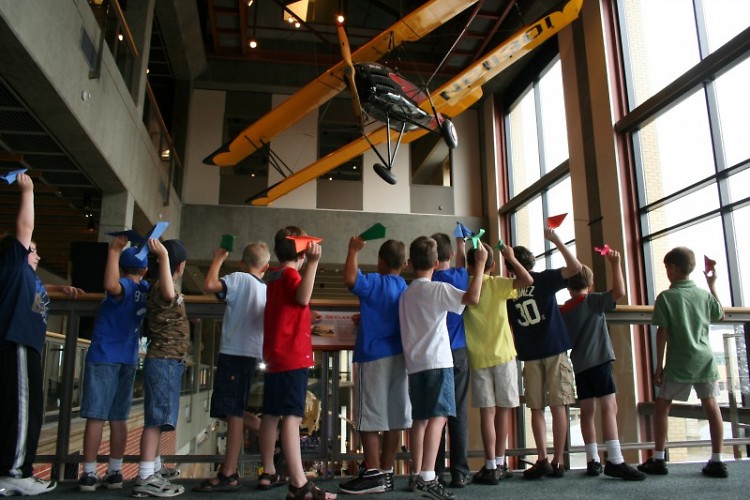Camp Curiosity is a day camp hosted by the Grand Rapids Public Museum that runs from June 26 to August 11 and gives kids between the ages of 5-11 a chance to keep their minds learning during summer break. The months of summer vacation for elementary students is a time that can be spent going to the pool, playing video games, watching TV and forgetting everything learned the school year before.
“We felt a need in the community to provide a fun yet educational summer camp program,” says Rob Schuitema, educational manager for the Grand Rapids Public Museum.
After years of offering sessions that covered several subjects, Camp Curiosity decided to streamline their program this year and focus solely on science. The six camps focus on engineering, natural science, astronomy and physical science, and allow campers to take part in fun experiments both inside and outside the walls of the museum.
“Kites, Planes, & Rockets” is a camp especially for kids who have a passion to learn more about engineering and aviation. The camp runs from July 10-12 and gives campers the chance to make kites, learn about Newton’s laws, throw paper airplanes off of landings and learn about the science behind wooden model airplanes.
“The last day is spent making bottle rockets out of two-liters and shooting them off on the south lawn to see how high they can go,” Schuitema says. “Last year they even got one onto the roof, so it was quite impressive.” The camp also brings in members of the FAA (Federal Aviation Administration) to give kids the opportunity to talk with individuals who work professionally in the aviation field.
The “Young Wizards Academy” focuses on the science behind potions and magic as it teaches campers what it would be like to become a witch or wizard in the world of Harry Potter.
“Twenty was our limit and we had 20 within the first two or three weeks and then had to start a wait list,” says Schuitema.
Just like in the Harry Potter series, kids are divided up into houses, provided with a wand made special by the museum’s lathe operator and given the chance to become seekers and chasers during a game of quidditch. The players use hoops and buckets, and keep their feet on the ground during the game.
Camp Curiosity also teams up with the John Ball Zoo on one of the days of the wizardry camp to bring in animals such as owls and snakes, familiar characters in the series, to teach kids about conservation and the folklore behind them.
For all the camps, campers are sent home each day with their experiments and a head full of fun new facts as well as what the Camp Curiosity team calls “discussion starters.” Discussion starters are a list of leading questions designed for parents so they can learn all about what their child discovered during that day. This allows parents an escape from the ever-popular “I don’t know” answer they may receive after asking what was done that day, and gives kids the chance to share the facts they learned once they are outside of the museum atmosphere.
“We consider everybody life-long learners. Before school and after you’re in school people are still learning, and that’s what a museum provides. It has the materials to help with that learning process,” Schuitema explains. “This camp is a chance to give kids an alternative to all the traditional camps they were seeing and trick them into learning a little bit. We’re gonna make this fun and engaging but there’s going to be lessons behind it.”
The Rapidian, a program of the 501(c)3 nonprofit Community Media Center, relies on the community’s support to help cover the cost of training reporters and publishing content.
We need your help.
If each of our readers and content creators who values this community platform help support its creation and maintenance, The Rapidian can continue to educate and facilitate a conversation around issues for years to come.
Please support The Rapidian and make a contribution today.

